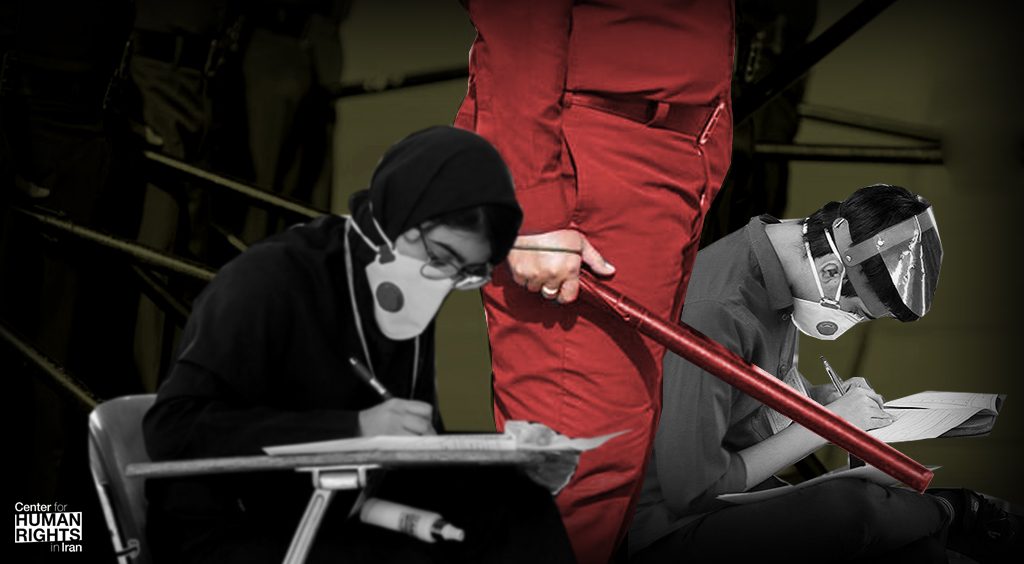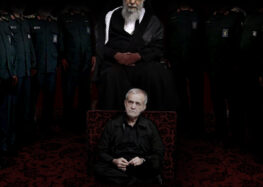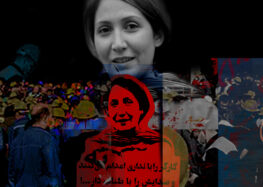Security Forces Respond to Iranian High School Protests with Force
 Teachers’ Union: “What right do the police have to treat the children of our country with such brutal violence?”
Teachers’ Union: “What right do the police have to treat the children of our country with such brutal violence?”
As high school final exams approach in Iran, students nationwide have been protesting the Education Ministry’s decision to test students at physical locations for ninth and twelfth graders, despite the threat of further increasing the country’s uncontrolled COVID-19 outbreak.
In mid-May 2021, students held rallies in more than 20 Iranian cities. Some were violently repressed by the police.
Why are the Students Protesting?
Education Minister Mohsen Haji-Mirzaei defended the ministry’s decision to hold physical exams by stating that virtual exams allow for more cheating.
At the protests, students responded with chants of “there can’t be in-person exams with COVID” and “we don’t want in-person exams” in rallies held in front of the education departments in Tehran, Isfahan, Karaj, Tabriz, Shiraz, Foulad-Shahr, Ahvaz, Yazd, Qazvin, Zanjan, Semnan, Birjand, Khorramabad, Shahr-e Kord, Dezful, Boroujerd, Ardabil, and many other cities between May 3-10.
The students and their parents say it is dangerously irresponsible for the authorities to insist on in-person exams when Iran’s COVID-19 per capita infection and death numbers are among the worst in the world.
The Health Ministry reported 366 deaths and more than 18,000 new cases on May 12, though the actual number is expected to be much higher. In total, more than 76,000 Iranians have died from the disease, according to the official count. Forty-five Iranian cities are currently designated as “condition red,” indicating the highest number of cases, 264 “condition orange,” and 139 “condition yellow.”
The Education Ministry was also criticized at the start of the new academic year in September 2020 for not anticipating limited accessibility to online schooling due to many families’ inability to afford computers or mobile devices for their children, forcing a high percentage of them to drop out. Some even cited the inaccessibility before committing suicide.
Iran’s Constitution, in Article 27, not only guarantees the right to hold peaceful demonstrations, Article 30 also requires the government to “provide all citizens with free education up to secondary school.
Protests Violently Repressed
Local media reports described violent police reactions at some student rallies.
“Unfortunately, in some cities, such as Qazvin, Yazd, Foulad-Shahr, and Isfahan, the police resorted to violence to break up peaceful student gatherings,” the Iranian Teachers Trade Association said in a statement on May 8, 2021.
It added: “Using force, pepper spray and batons to intimidate and arrest students and underage youths is a shocking violation of humanitarian and civil behavior. It is wrong to use violence to deal with such simple gatherings when the authorities should instead be engaging in discussion and teaching students how to behave in a civil manner.”
“What right do the police have to treat the young children of our country with such brutal violence?” said the statement.
Future of Student Protests Under Severe Threat
This is the first significant nationwide protest by high school students since the Islamic Republic of Iran was established in 1979, joining other sectors such as teachers, workers, and retirees that have been actively demanding higher wages as the country faces acute economic problems.
“Our country is not paying any attention to the role of Generation Z in shaping our future domestic and foreign policies,” opined Sobhe Sadegh, a state news site in Iran with close ties to the Islamic Revolutionary Guard Corps (IRGC) on March 7, 2021.
It added: “Some of Generation Z’s characteristics, particularly in regard to the internet, clearly show that ruling over them will not be as easy as previous generations.”
Read this article in Persian





